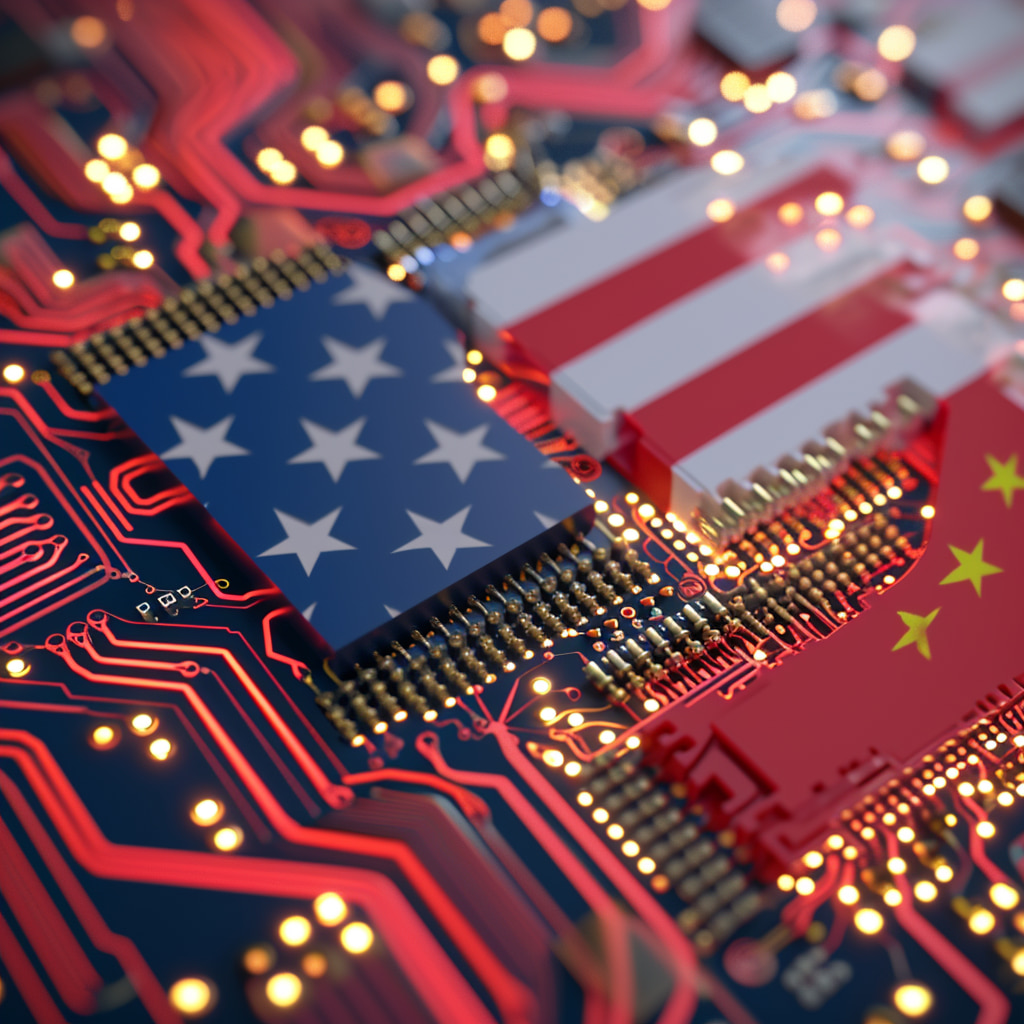The Reagan National Defense Forum saw Gina Raimondo, head of the U.S. Department of Commerce, express frustration over Nvidia’s swift response to tightened restrictions on semiconductor sales to China. While the U.S. intensifies its five-year campaign against Chinese technology, the efficacy of export controls remains questionable. Nvidia’s ability to promptly develop alternative AI chips for the Chinese market highlights the challenges faced by American authorities.
Complexities in banning AI chips: A cat-and-mouse game
The evolving nature of technology poses challenges to enforcement. Ms. Raimondo’s assertion that redesigning chips could be swiftly controlled contrasts with the Department of Commerce’s year-long effort to address Nvidia’s previous workaround. China, adept at finding loopholes, continues to explore alternative routes. Training AI models using slightly less advanced chips complicates the imposition of a comprehensive ban, requiring a nuanced approach.
Enforcement hurdles and the risk of smuggling
Enforcing export controls rests largely on chip manufacturers, adding layers of complexity. The Department of Commerce, while empowered to penalize violations, faces challenges in monitoring and preventing potential smuggling. The coin-sized, commercially available devices, which are difficult to distinguish from controlled technologies, contribute to an environment conducive to illicit activities. Transshipment, particularly through countries not bound by U.S. export-control regimes, amplifies the difficulty of policing chip transfers.
Chinese tech sector adapts
Export controls, designed to restrict China’s access to advanced technology, inadvertently contribute to increased costs for Chinese buyers seeking American AI chips. This, in turn, aligns China’s tech sector with the government’s push for indigenous technological development. The shift is evident in the case of Huawei, once reliant on foreign chips, now turning to domestic alternatives like SMIC. Export controls are inadvertently steering China towards import substitution, fostering a more self-sufficient tech industry.
Impact on military AI development
Contrary to the intended goal of denying China access to advanced technology for military AI, the controls may be failing. The People’s Liberation Army, with adeptness in leveraging workarounds, continues to access necessary chips. Rather than hindering military capabilities, export controls raise the cost for Chinese buyers, incentivizing a closer alignment between China’s tech sector and the government’s focus on domestic development.
Effectiveness of export controls: A balancing act
Beyond chips, export controls extend to tools used in chip manufacturing. Collaboration with allies like the Netherlands and Japan has limited the sophistication of equipment sold to China. However, the controls also fuel a race for technological catch-up among Chinese toolmakers. The impact is evident in the rapid growth of domestic toolmakers, challenging the assumption that export controls alone can stymie China’s technological advancements.
Fueling a more sophisticated Chinese industry
America’s campaign against Chinese technology, while well-intentioned, faces challenges in both effectiveness and unintended consequences. The ability of Chinese entities to exploit loopholes and the resulting technological catch-up highlight the limitations of export controls. Moreover, the assumption that the future economic and military balance hinges solely on AI and computing power is questioned. As the U.S. contemplates tougher export controls, the risk of unintended consequences and a more sophisticated Chinese industry looms large.
As U.S. lawmakers eye more expansive controls, a bill is in the works to sever China from all American chip technology, not just the cutting-edge. The proposed legislation, spearheaded by Republicans Mike Gallagher, Elise Stefanik, and Michael McCaul, seeks to extend controls to cover a broader spectrum of chip technologies. This potential escalation raises concerns among allies, including Japan and the Netherlands, as the U.S. aims to curb China’s dominance in semiconductor manufacturing.
Challenges and future scenarios
While the road ahead for U.S. export controls remains uncertain, the potential for more comprehensive restrictions raises questions about international cooperation and the broader implications for global semiconductor supply chains. As geopolitical tensions persist, finding a delicate balance between control measures and unintended consequences will be pivotal in shaping the future landscape of technology competition between the U.S. and China.





